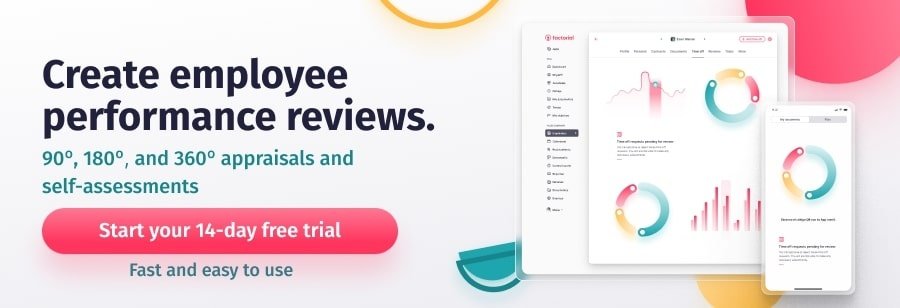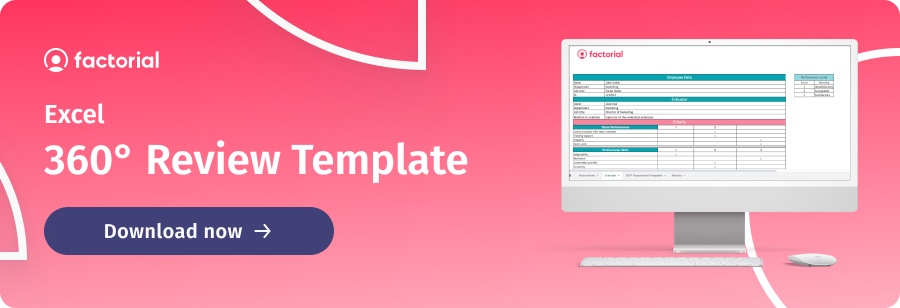Nurturing a high-performance culture is a key priority for many HR managers. Studies have shown that those who engage in high-performance management systems tend to yield much better results in terms of employee output, staff retention, and motivation levels. High-performance work culture is also far more likely to result in higher customer satisfaction ratings and overall business success.
If you’re wondering what this entails, then you’ve come to the right place.
In this post, we will look at everything you need to know to cultivate a high-performance culture in your company. We will discuss what it is and how it can benefit your business. Finally, we will also share what you need to do to create, drive and manage a high-performing workforce and reap the many benefits it brings.
- High-Performance Culture Definition
- Characteristics of High-Performance Culture
- Benefits of a High-Performance Culture
- How to Create a High-Performance Culture
- High-Performance Culture: Examples of Best Practices
- Measuring Performance with HR Software
What Does ‘High-Performance Culture’ Mean? A Definition
Research and advisory firm Gartner defines a high-performance workplace as “a physical or virtual environment designed to make workers as effective as possible in supporting business goals and providing value. It results from continually balancing investment in people, processes, physical environment, and technology to measurably enhance the ability of workers to learn, discover, innovate, team, and lead, and to achieve efficiency and financial benefit.”
Put simply, a high-performance culture is one where employees are highly productive and motivated. They are clear on the values and goals of the company, and they have the resources, knowledge, and leadership support needed to achieve their objectives.
High-performance management goes far beyond going through the motions of performance review questions, though. For it to be truly effective, companies need to have clear values and objectives and communicate them regularly. They also need to implement policies to reinforce positive behavior and motivate and empower employees so that all members of an organization can reap the benefits of performance appraisals.
In other words, you need to have the right management style and strategy, and rely on robust systems of accountability, cooperation, and support, amongst other factors.
Characteristics of High-Performance Work Culture
Let’s start by taking a look at the characteristics of a high-performance culture.
The hallmark of a high-performance culture include:
-
Common purpose and goals
-
Strong leaders and empowered and engaged employees
-
A clear direction guided by organizational values
-
Open to feedback and healthy conflict
-
Recognition of the importance of rewards and recognition
-
Trust and accountability
-
A growth mindset
-
A focus on continuous learning and career development
-
Open and effective communication and collaboration
-
Agility and security
-
Highly adaptable employees that see setbacks as opportunities to learn and improve
-
The freedom to share open and honest 360 feedback
-
Openness to change
Benefits of a High-Performance Culture
There are countless benefits to creating and driving a high-performance culture in your organization.
Here are a few to inspire you:
- First and foremost, corporate culture is one of the first things people look for in a workplace, so the more inviting your culture is, the more likely you are to attract and retain top talent. Plus, lower turnover means savings in terms of recruitment and training.
- Being seen as a great place to work is also a pivotal factor in terms of employee motivation, team building, loyalty, and commitment.
- When employees feel supported and understand how their performance contributes to the overall success of the company, they are far more likely to develop into proactive and responsible employees that feel empowered and take accountability for their actions. And when everyone is accountable it ensures a built-in sense of appreciation for the contribution of every individual.
- In a high-performance culture, individuals work hard to meet goals, employees feel engaged and aligned with the company’s values, and teams trust each other.
How to Create a High-Performance Culture
Many HR managers face several struggles when it comes to creating and driving a high-performance culture. This is often because traditional performance management systems are focused on arbitrary reviews and “ticking all the boxes”, rather than the daily communication of values, and the alignment of goals and expectations.
Now we’ve seen what it is, let’s take a look at a few strategies to help you nurture a high-performance culture in your organization.
Clarify Purpose & Values
The first step in creating and driving a high-performance culture is working out what your purpose and values are as an organization. This is a vital step that forms the foundation of the culture and leadership style you ultimately develop. SO how do you do this?
Firstly, you need to ask yourself questions like “Where are we going?”, “What do we believe in?”, and “Why do we exist?”. Secondly, you need to make sure you communicate your purpose and values to each member of your company regularly. This will help ensure everyone is on the same page and working towards one common goal. What’s more, when employees feel aligned with their company’s values, they are more engaged and more likely to serve as brand ambassadors for the company.
Reinforce Positive Behavior
The next vital step in your high-performance culture strategy is making sure you reinforce positive behavior. This includes rewarding individuals who represent and transmit the values of your organization. You might consider implementing an employee recognition program or a pay for performance program to engage employees and boost morale and productivity.
Encourage Open Communication
Along with reinforcing positive behavior, you also need to make sure you encourage open two-way communication in the workplace. A clear and fluid line of communication between managers and employees is a must for any high-performance culture. It helps employees understand the company’s goals and what is expected of them. Plus, it helps managers understand the career development goals of each member of their teams.
This is especially important to consider while conducting and writing performance reviews for remote employees. When employees feel they have a voice and what they say matters, they are far more likely to develop into motivated, committed, and loyal members of your organization.
Empower Your Employees
The most successful leaders are aware of the value of empowering employees to reach their full potential. It fosters growth and trust, boosts morale, and helps employees take responsibility for their performance. The best way to achieve this is to provide your employees with enough training, resources, and support so that they feel confident enough to work proactively and make a positive impact.
Collect Feedback
The final vital strategy that needs to be mentioned here is the importance of collecting regular constructive feedback. This goes far beyond annual performance appraisals and salary reviews. Instead, you need to nurture a culture of continuous feedback so that employees feel they can communicate any questions or concerns at all times, whether negative or positive.
This will help your employees feel like they can be open and transparent without fear of recrimination. It will also help them feel that what they have to say is taken seriously. This is the best way to find out how your employees are really feeling and if there’s anything about your corporate culture that needs to be improved. 
High-Performance Culture: Examples of Best Practices
Creating a culture of high performance starts with leadership practices and moves from the top down. Employees who feel aligned with company values and satisfied with the company culture will want to take your team to the next level. Here are a few additional examples of best practices to help you include every member of your team and drive a high-performance management culture:
- Focus on communication, company values, performance management, and employee growth and development.
- Communicate your purpose and values every day.
- Set clear expectations for your employees.
- Keep track of both employee potential and performance with tools like a 9-box grid or HR software.
- Address the development needs of all employees to encourage high-performance work.
- Provide regular, informal feedback.
- Above all else, set an example for your team and focus on what matters.
Aside from implementing the right high-performance culture strategy, you also need to make sure all your employees have access to the right tools. This includes implementing a performance management system that deals with every aspect of high-performance management. This will help you establish an effective performance improvement plan that drives positive behavioral change and facilitates feedback and development.
Measuring Performance with HR Software
A recent study by Zion Market Research has revealed that the performance management software industry is predicted to gain traction over the coming years and generate revenue of approximately USD 5,633 million by 2026. This means that HR managers need to be prepared to adapt to this changing landscape if they want to get ahead of the next biggest trend in business.
So, given the above, what type of software and what specific features should you be looking for?
Firstly, the performance management solution you choose should help your managers track and evaluate employee performance metrics and KPIs. Secondly, it should help you provide employees with relevant training and professional guidance. Thirdly, it should include features for tracking and monitoring progress reviews, reporting, goal setting, real-time feedback, and rewards for improved performance.
With Factorial’s performance management software solution you can:
- Gain insight into your workforce with 360-degree reviews
- Schedule regular performance review cycles in order to make strategic decisions based on qualitative and quantitative data
- Tailor each employee evaluation to the performance needs of your company
- Choose from multiple-choice, short-answer, or rating questions, and select whether or not answer will be anonymous
- Track the progress of each employee performance review as it gets filled out
- Automate your performance reviews processes
- Access feedback directly on Factorial’s platform
- Centralize all your HR processes
Sign up now and start improving your business management with Factorial.


